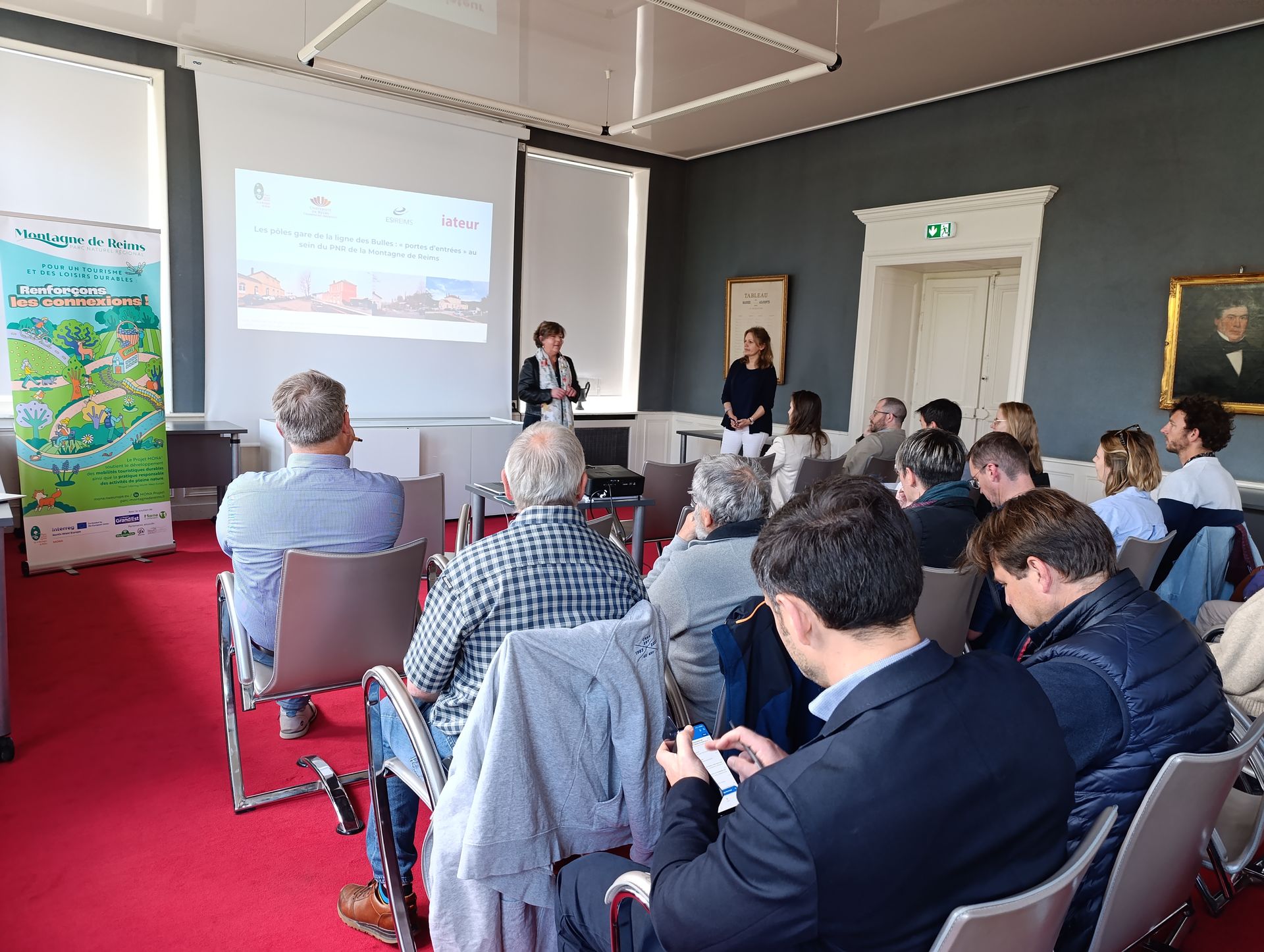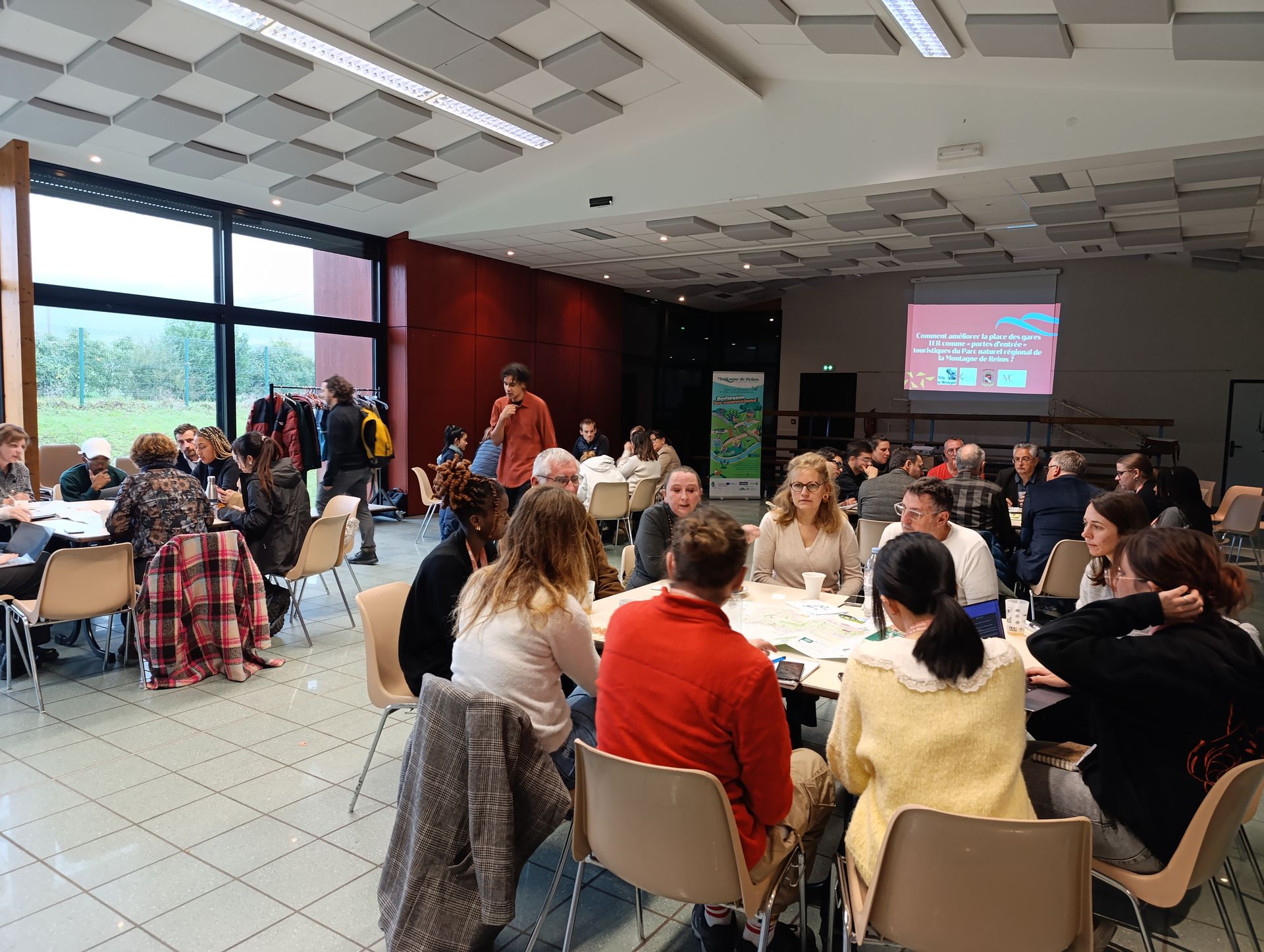How can rural railway stations be transformed into welcoming entry points to protected natural areas? Students took on this challenge in the Montagne de Reims Regional Nature Park to explore the potential of the Ligne des Bulles, a regional train line that links Reims and Épernay via the park.
An on-site study involving two groups of students
The first step was completed between September 2024 and May 2025 through the implementation of an 'on-site study' involving students. The goal was to collaborate with two different universities to obtain a variety of expertise.
Firstly, an expert perspective was sought on the customer experience and the potential for developing the role of this train line as a key aspect of sustainable tourism in the area. This phase was carried out in autumn 2024 with a group of 25 Master's degree students in Tourism and Recreational Management from IREST (Tourism Research and Education Institute), Paris.

A second phase involved developing projects to enhance the role of train stations as green entrances to the park. Master's degree students in Sustainable Urban Planning at IATEUR (Reims Institute of Land Planning, Environment and Urbanism) worked on this issue between January and May 2025.
These workshops were organised in partnership with the Montagne de Reims Regional Natural Park, local municipalities, and numerous regional stakeholders. They invited students to propose ways to improve the marketing of the train line and redesign the station areas in Rilly-la-Montagne, Germaine, Avenay-Val-d'Or, and Aÿ-Champagne to create real entry points to the park.

The most recent outcomes of this study
Building on the work of tourism students from last autumn, future urban planners spent several months working on redevelopment projects for station forecourts along the Ligne des Bulles.
The students aimed to create innovative, sustainable and context-sensitive urban and landscape designs that would transform these railway stops into welcoming and functional spaces for daily commuters and tourists alike.
The project aims to enhance these stations as entryways to the exceptional Montagne de Reims Regional Natural Park and reconnect them with the heart of the surrounding villages. The four stations located within the Regional Natural Park of the Montagne de Reims hold major potential as starting points for exploring the area. As access points to villages, hiking trails, forested areas and the region's rich heritage, these stations deserve to be redesigned to better accommodate and guide visitors. The students’ proposals focus on improving public spaces, encouraging intermodality, and enhancing the stations' appeal as gateways between urban life and nature.
The Ligne des Bulles train line also represents an opportunity to promote more sustainable tourism. Transport accounts for almost 70% of greenhouse gas emissions related to tourism. Encouraging the use of public transport, particularly trains, would help to reduce visitors' carbon footprint.
Two train stations received particular focus: Rilly-la-Montagne and Aÿ-Champagne.
Where MONA stimulates collaboration
This two-phase on-site study would not have been possible without the MONA Project. It brought together local partners, including the Park, local authorities, municipalities, mobility operators and universities, around a shared project. This enabled the partners to agree on a shared vision of how train stations could contribute to modal shift and promote more sustainable tourism in the Montagne de Reims Regional Nature Park.
A joint deliverable will be published by the end of the year to present the projects devised by the students and to be developed by the partners.